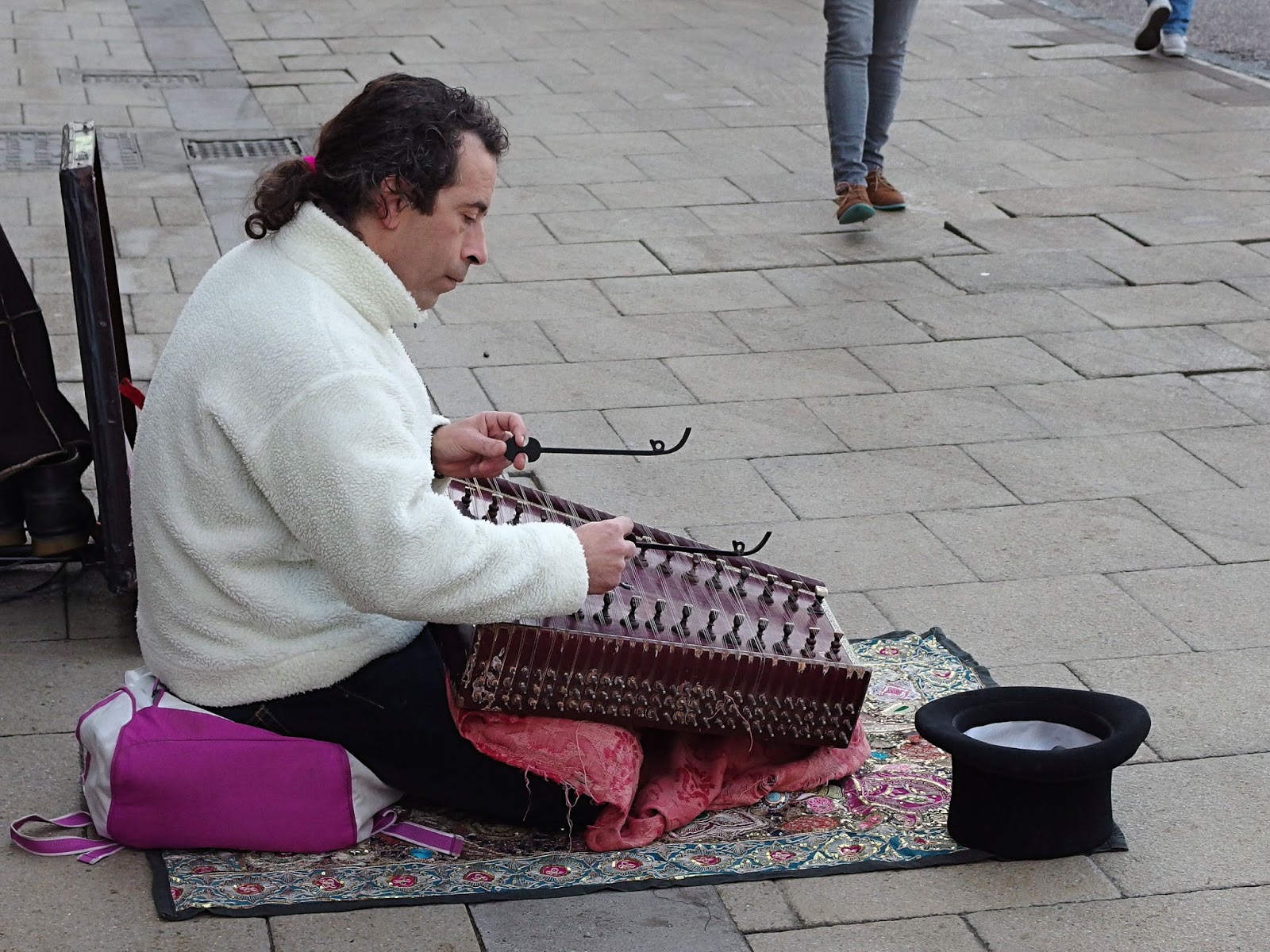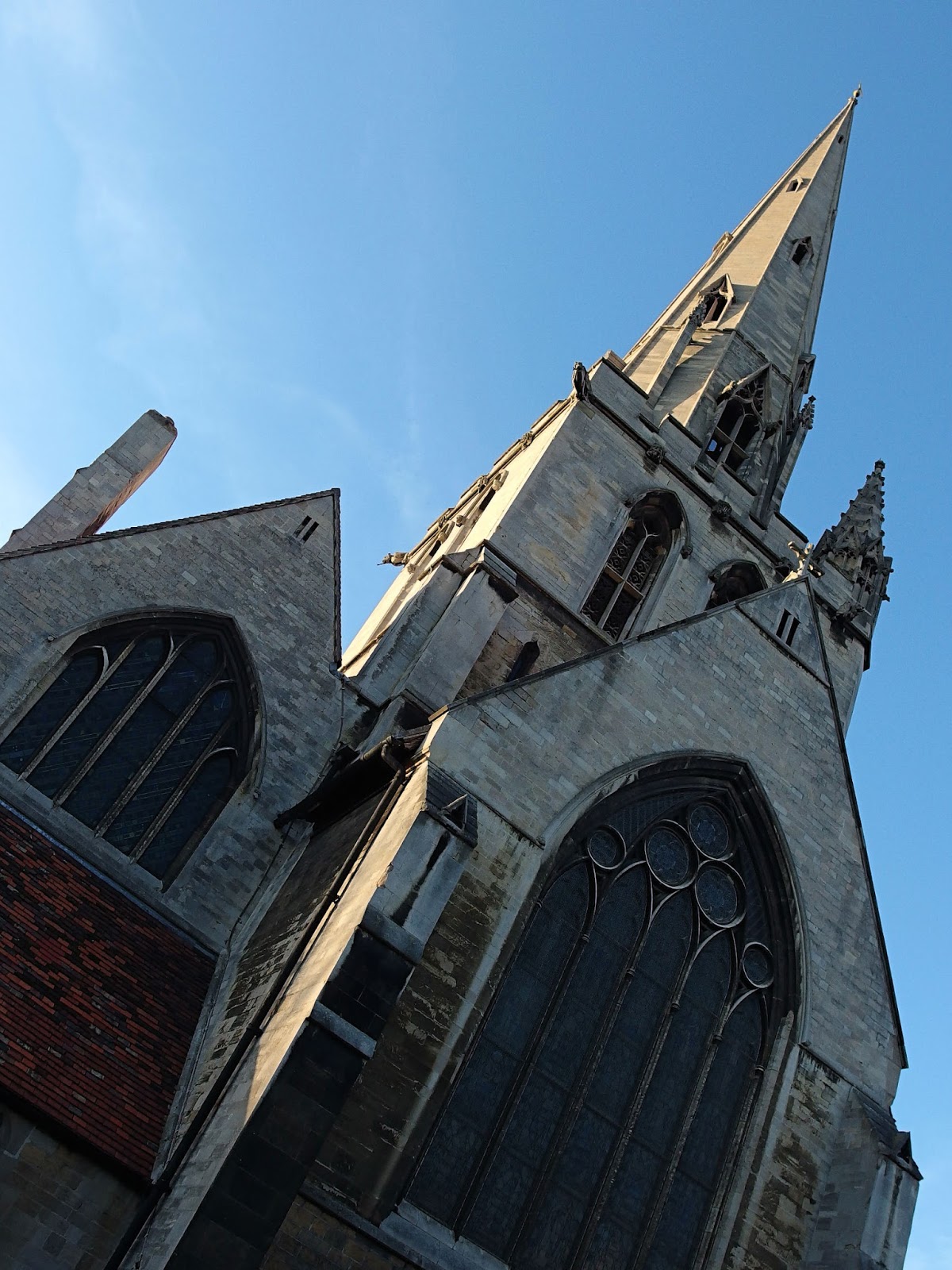....being a collection of things which I meant to show you earlier but didn't get around to.
Another Man From Thetford
The gentleman above should have taken his place among the four people with connections to the town of Thetford that I introduced you to in an earlier post. Meet Dr Allan Minns. He was born in The Bahamas in 1858 where he received a good education which led him to Guy's Hospital in London, where he qualified as a doctor. He went on to become the doctor at the workhouse in Thetford. He was elected Mayor of Thetford in 1904, the first black man to become a mayor in the UK. His grandmother had been a slave in the West Indies.
Roysia's Stone
Standing in my local town of Royston, right on the cross-roads of two ancient routes, is this great hunk of rock. The routes in question are the Icknield Way and Ermine Street, two of the oldest roads in this country (we're talking BC rather than AD here!). The rock was transported here by an ice-sheet during the last Ice Age; it's Millstone Grit, which probably means it started its journey in Yorkshire or Derbyshire! It's known as the Royce Stone and there's a hole in the centre which once supported the shaft of a preaching cross set up by Lady Roysia in Norman times. The names have been shortened over the centuries - Roysia's Stone became Royce Stone and the town became Royston.
A Rural Skyscraper
A high-rise office block in the sleepy village of Hatley? Well, it does house offices these days but that's not its original purpose. It's part of a farm which was rebuilt in the late nineteenth century to incorporate all the best practices of the age. Such farms were known as "model farms" and their owners were naturally proud of their creations. So proud in fact that they didn't want anything as unsightly as a water tower to upset their idea of perfection so they disguised it as (an admittedly rather tall) dwelling.
Strange Fruit
Stone pineapples are often featured as decoration on the gateposts of large houses. When the fruit first appeared in the UK, having been discovered by Columbus, it was horrendously expensive - it was many years before they could be grown under glass in this country. It became something which was only eaten when important guests were to be received. As a result it became a symbol of hospitality.
George Lawrence's Eastern Cousin
Recently I showed you George Lawrence's hammer dulcimer which is on display in Cambridge Folk Museum. Shortly after that I encountered this man busking in the streets of Cambridge playing what I believe is an Iranian santur, a very similar instrument. There are, in fact, variations on the dulcimer in just about every country between Ireland to China.
Bear On The Roof !
It has to be Whittlesea, of course! I've shown you all kinds of beasts rendered in straw by our local thatchers. Naturally enough in Whittlesea it had to be a straw bear! (And if you've no idea what I'm talking about you need to look at this and subsequent posts).
Take care.
Friday 31 January 2014
Tuesday 28 January 2014
Saturday 25 January 2014
All Saints' Church
All Saints' Church in Cambridge is an enigma:
- Easy to see but difficult to find
- An attempt to discover a way forward by looking back
- A treasured jewel which has been preserved largely through neglect
So let's have a look inside...
By the mid-19th century the old All Saints' Church in Trinity Street had become insufficient for the needs of the parish and needed so much work that it was decided to build a new church in Jesus Lane which was nearer to the homes of the bulk of the congregation. They tried to get the leading architect of the day, Gilbert Scott, to design the church but in the end had to settle for his pupil, George Bodley, to undertake the task.
His initial design did not hold much promise, being too expensive for the funds available and too big for the land on which it was to be built!
Back to the drawing board, Bodley!
His second design was in the Decorated style of the early 14th century. It was his first attempt at the style but he went on to design over 100 other similar churches.
So, here we are in the 1860s, the height of the Industrial Revolution, when Britain was moving headlong into the modern age. And here is Bodley building a church in the style of 1320 - what's going on?
Not everyone was ready to jump into the future and there was a considerable counter-culture intent on returning to old, half-forgotten values. The Gothic revival in architecture,literature and poetry, the growth of Anglo-Catholicism and the Art and Crafts Movement all harked back to earlier times. So an old-fashioned church, richly decorated with wall painting and with hand-crafted fittings would fit the bill perfectly. And that's precisely what they got.
The walls were covered with what appears at first glance to be wallpaper but which, on closer inspection, turns out to be stencilled wall-painting. It looks very much like the work of William Morris and indeed Bodley did employ Morris's firm to do some work, particularly the roof, but the walls are apparently by someone else - possibly Bodley himself. Let's see what Morris & Co did with the roof then...
Perhaps I should admit at this stage that I had real problems getting these photos; there's not much light inside the church - and there's a reason for that. Early Medieval churches were designed differently, without clerestory windows to light the upper portion of the building. A church was seen as a dark, cave-like space in which to meditate deeply, contemplating ones sins and mortality, whereas later churches and cathedrals were designed to lift the spirit and send ones thoughts soaring heaven-ward. It's a difference in philosophy as much as an architectural variation.
Above the chancel arch is this glorious painting of Christ on a rainbow throne, flanked by The Virgin Mary and John The Baptist. It's based on Medieval "Doom" paintings which were usually in this position but had depictions of heaven (on Christ's right) and hell (on His left). Presumably the rather gory imagery used to represent hell did not sit comfortably with Victorian sensibilities.
The pulpit was designed by Bodley and painted by Wyndham Hope Hughes. On the centre panel is St Peter....
And at the other end of the church is another painting, also probably by Wyndham Hope Hughes, this time of Jesus blessing the children...
In front of the painting is Bodley's font...
So we have a very fine church, but the parish itself was not a wealthy one and consequently there were very few changes from the initial conception of George Bodley and his associates.
As a result it's all there for us to enjoy today.
The little war memorial above was added after The First World War.
And the fine Women's Window was added in 1944. It depicts The Virgin Mary (accompanied by a Boy Scout!), Mary Magdalene and the Woman at the well in Samaria, as well as four great Christian women of the time - Elizabeth Fry, the prison reformer; Josephine Butler, social reformer; Mother Cecile Isherwood, foundress of a community of nuns in South Africa; and also Nurse Edith Cavell.
During the 20th century the congregation declined and in 1973, when the magnificently-named Rev L J Hereward Hard retired, the church fell into disuse. The church is now in the care of The Churches Conservation Trust. It's usually open to the public; a board stands outside saying "Church open", you push the rather plain door open and, if you are lucky, you'll have the place to yourself - no tour guide, no admission charge, no audio tour. Just glorious colour, fascinating details and a slightly fusty atmosphere.
Back outside you can stare up at the tower and spire, which apparently is based on the church at Ashbourne in Derbyshire, and wonder at the curious times in which the church took shape and the series of chance events which have led to its survival.
Take care.
Thursday 23 January 2014
A Pembroke Portfolio
Pembroke College may not be top of most visitors' itinerary but it is a very old college, it's in central Cambridge, it has a wide range of buildings in different styles, it has some lovely picturesque corners and it always seems a very friendly place. This is by no means an exhaustive account, just a few pictures I took on a day of bright, low-angled sunshine which made some shots impossible but enhanced others.
Statue of William Pitt The Younger,
youngest ever British Prime Minister
when he was elected in 1783 at the age of 24.
He was educated at Pembroke.
(Yes, roses blooming in January!)
Ridley's Walk
A picturesque path leading between college buildings.
All the above photos were taken in the vicinity of Ridley's Walk, surely one of the most beautiful short strolls in Cambridge; even in mid-winter. It was named after Bishop Nicholas Ridley, former scholar at Pembroke, who was martyred in 1555, but there's also a plaque to Sir Harold Ridley, the eye-surgeon who pioneered lens implants after treating a fighter pilot who had been severely injured by Perspex splinters from the cockpit when his plane was shot down. Ridley operated on the man 19 times and restored the sight to one eye. But he also noticed that Perspex was not rejected by the body's immune system which led him to his breakthrough.
Modern Architecture - Foundress Court
That crazy, slanting sunlight really lifted these shots.
Three Windows
...and a staircase straight out of Hogwarts.
The Chapel
A close-up of the old Bible on the lectern
And the interior of the Chapel,
a very early work of the great architect
Sir Christopher Wren
in the 1660s.
We will be back sometime to show you more, including the outside of the Chapel and the gardens in the spring or summer. Until then.....
Take care.
Subscribe to:
Posts (Atom)



















































